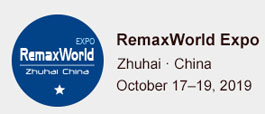At an EMEA event focused on “technology as a driver for change”, OEMs talked about the challenges this presents.
Enterprise Times reported on the event, with Senior Vice President of Human Resources from Ricoh, Bev Cunningham, stating that she is worried about “an ageing workforce of 7,000 printer engineers”. Because printers can be repaired or maintained remotely, this decreases the necessity for engineers, but the OEM has a long history of “promoting long service” and tries to avoid redundancies.
However, Ricoh has recognised a new “gap in the market” and has the contract to “install and maintain the Amazon drop boxes” that are increasing globally. Cunningham said that it was ironic ,as the arrival of drones may in the end take over the click and collection sites. She added that “I cannot transform all 7,000 engineers away from their role, but I can do some”.
During the discussion, other companies concurred with Ricoh’s problem and discussed the change in office roles and cloud-based services as well as new technologies to update their business, or “retain talent”. Ricoh is a company that invents technology, including 3D printing and inkjet patents, and is said to understand that 3D printing will be unsettling to manufacturing. Cunningham commented that“printing is not dead – it’s just different”, referring to the recent drupa event in Germany.
Tony Glass, EMEA at Skillsoft, focused on how new technologies have an impact on “learning, training and development” and how this speeds up change. He noted that he wanted to examine how his company could “build applications to support businesses in the future”, pointing out that “by 2020 the majority of the workforce will be millennials; don’t leave the existing generation behind”. The main outlay for businesses is employees, and corporations often have the dilemma of an “ageing workforce”, and the question of how to retain their talents while keeping them up-to-date.
As an example, Glass used Nokia and the effect that technical advancement had in Finland as the demand for paper fell. Nokia rescued the workforce, but with the “demise of the Nokia mobile phone” there is a question of “what happens next”, although Finland is said to be a good country in which to start up tech businesses.
Learning management systems need to be flexible if they are used, and the training needs to benefit the company in the present and future, as millennial employees are more temporary and lean towards self-employment and “short term contracts”, a trend being seen in the USA. This in itself may impact training, but businesses will still need to offer fundamental training, and offer the initiative of training that is more advanced than the employee’s present role.
Glass concluded that “the crystal ball is pretty smoky” and that “learning is at the point of need”, making the point that training needs to be available for everyone but should be conveyed correctly. He ended the discussion by saying “the employee of today is wholly different from the employee of yesterday”.
http://www.therecycler.com/posts/ricoh-discusses-ageing-workforce/












